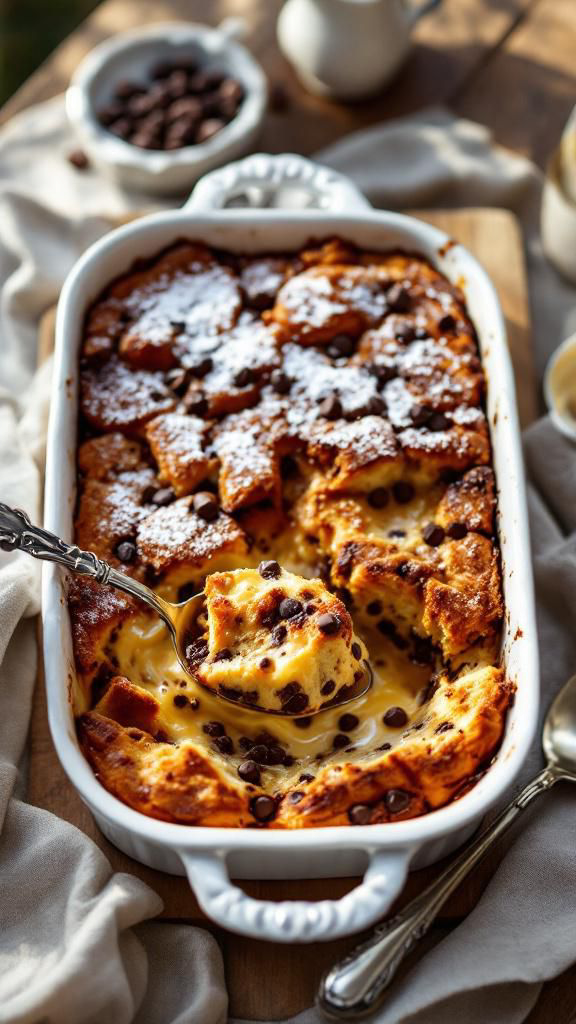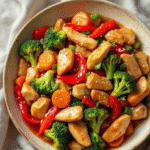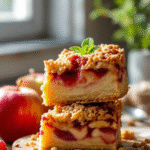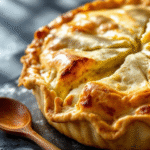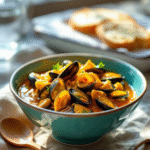I. Introduction
Mary Berry isn’t just a baker; she’s a British institution. With over 70 cookbooks to her name – including bestsellers like Mary Berry Cooks, Absolute Favourites, At Home, and the essential Baking Bible – she’s taught the nation to cook with grace and precision for over 40 years. As the beloved judge on BBC’s The Great British Bake Off, her emphasis on reliable recipes and quality ingredients won hearts worldwide. Trained at Paris’s prestigious Le Cordon Bleu, Mary started as a magazine food editor before her first book in 1966. An AGA expert and recipient of the Guild of Food Writers Lifetime Achievement Award (2009) and a CBE (2012), her authority is unmatched. Her Chocolate Bread and Butter Pudding is a masterclass in transforming humble staples – stale bread, eggs, milk, and chocolate – into pure, decadent comfort. It’s a warm hug on a plate, perfect for using up leftovers while feeling utterly indulgent. We’ll explore its history, Mary’s unique touch, provide foolproof steps (with vivid image prompts!), nutritional insights, a stellar vegan adaptation, and expert tips to ensure your success.
II. Mary Berry’s Unique Approach & Historical Context
Mary Berry’s cooking philosophy hinges on simplicity, quality, and reliability. For this pudding, she insists on:
- Fresh, Full-Fat Dairy: Whole milk and cream ensure a luxuriously rich custard.
- Good-Quality Chocolate: At least 70% dark chocolate delivers depth without excessive sweetness.
- Slightly Stale Bread: Brioche or thick-sliced white bread (like a bloomer) absorbs the custard perfectly without dissolving.
- Precision & Resting: Exact baking times and resting the assembled pudding before baking guarantee ideal texture.
History of Bread and Butter Pudding:
This dish is a triumph of frugality. Its origins trace back to early 11th or 12th-century England, born from the need to use up stale bread (“pudding” originally meant a stuffed stomach or sausage casing, evolving to mean boiled or baked dishes). Early versions, often called “Whitpot,” were savoury or sweetened with dried fruit. By the 17th and 18th centuries, adding eggs and cream created a custard base more akin to today’s dish. Chocolate’s introduction came much later, post-19th century, as cocoa became widely available. (Sources: The Oxford Companion to Food by Alan Davidson, British Food History archives).
Mary Berry’s chocolate version honours this tradition of resourcefulness while elevating it with her signature elegance. She stays true to the core technique but swaps raisins for high-quality chocolate, creating a sophisticated yet deeply comforting modern classic. Her precise instructions ensure even novice bakers achieve perfection, embodying her mission to make great cooking accessible.
III. Notices on Ingredients & Equipment
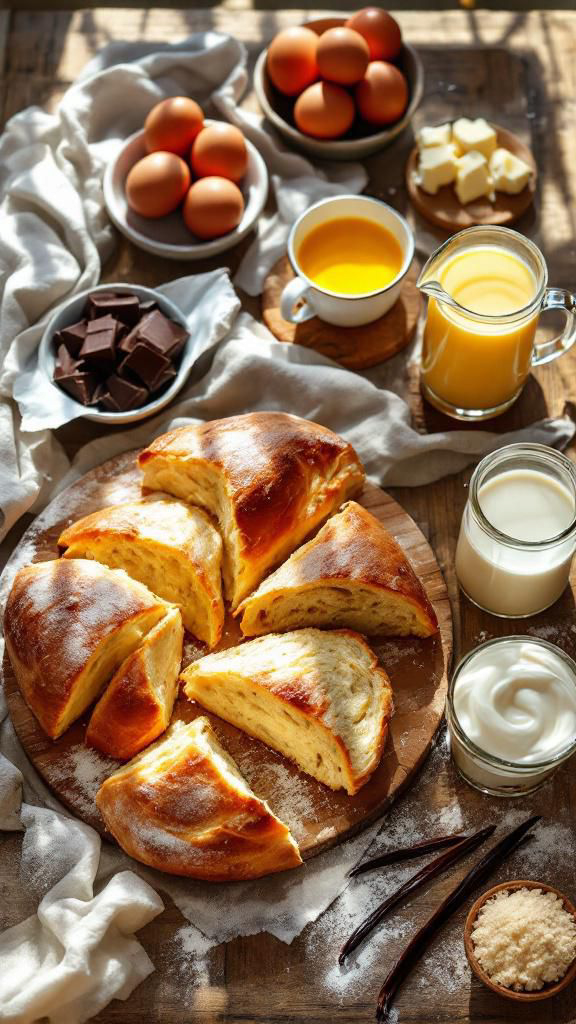
Essential Ingredients (Serves 6):
- Bread: 8 thick slices (approx. 300g) slightly stale Brioche OR good-quality white bread (like a thick-sliced bloomer). Stale is key!
- Butter: 50g unsalted butter, softened (plus extra for greasing)
- Chocolate: 150g good-quality dark chocolate (min. 70% cocoa solids), roughly chopped
- Eggs: 3 large free-range eggs
- Yolks: 2 large free-range egg yolks
- Sugar: 75g golden caster sugar
- Dairy: 300ml whole milk + 300ml double cream
- Vanilla: 1 tsp vanilla bean paste OR seeds from 1 vanilla pod
- Pinch of fine sea salt
Necessary Equipment:
- Deep 1.5-litre (approx. 9×9 inch) ovenproof baking dish
- Large mixing jug or bowl
- Whisk
- Small saucepan
- Sharp knife and bread board
- Sieve (optional, for custard)
- Measuring jug and spoons
- Foil for covering
IV. Recipe Instructions
Prep Dish & Bread: Generously butter the baking dish. Butter one side of each bread slice. Cut slices diagonally into triangles.
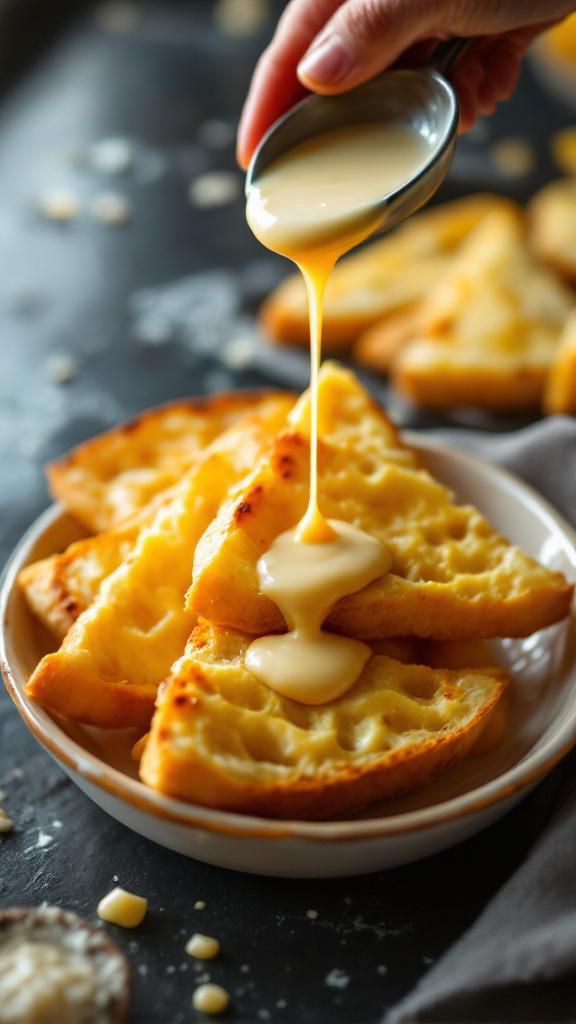
Layer Bread & Chocolate: Arrange half the bread triangles buttered-side up in the dish, slightly overlapping like fish scales. Scatter half the chopped chocolate evenly over the bread. Repeat with the remaining bread and chocolate.
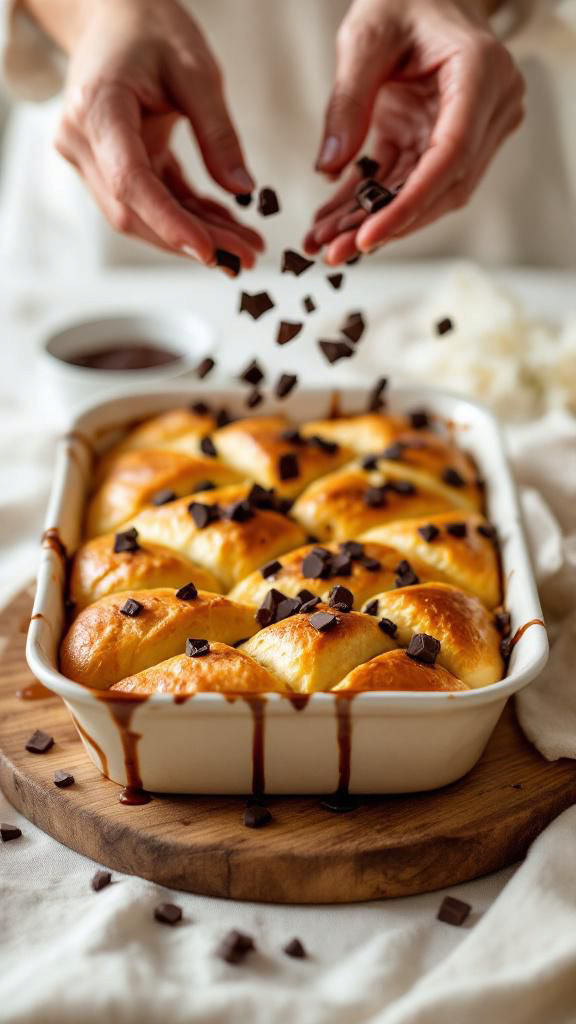
Warm Dairy: Gently heat the milk, cream, and vanilla bean paste (or pod seeds) in the saucepan over medium-low heat until it just begins to steam and tiny bubbles appear around the edge (DO NOT boil). Remove from heat immediately.
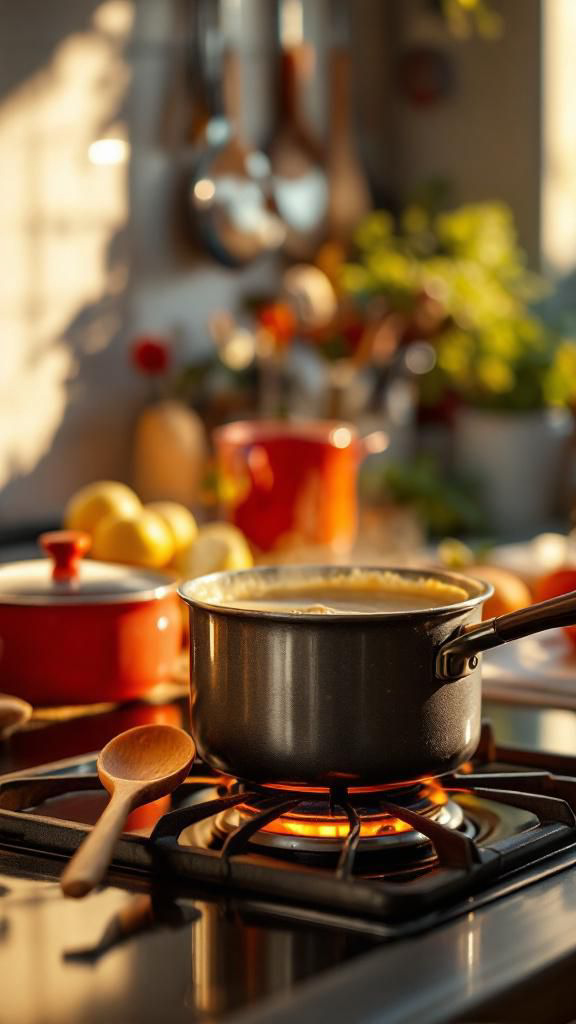
Make Custard Base: Whisk the eggs, egg yolks, sugar, and salt in the large jug/bowl until just combined (don’t over-whisk to avoid bubbles). Slowly pour the warm milk/cream mixture into the egg mixture, whisking constantly until smooth.
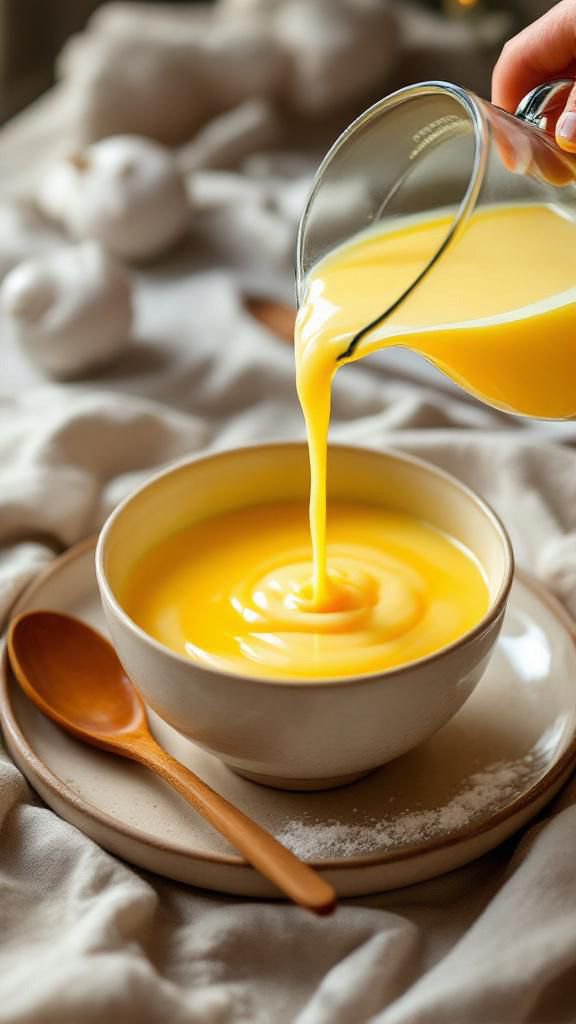
Strain & Pour: If desired, strain the custard through a sieve into another jug for extra smoothness. Slowly and evenly pour the custard over the layered bread and chocolate in the dish. Gently press down any bread poking above the custard.

Rest: Let the pudding stand for at least 30 minutes (up to 1 hour) at room temperature. This is CRUCIAL for the bread to absorb the custard. Preheat oven to 160°C (140°C Fan)/325°F/Gas Mark 3.
Bake (Covered): Cover the dish tightly with foil. Place on a baking tray (to catch spills) and bake in the preheated oven for 30 minutes.
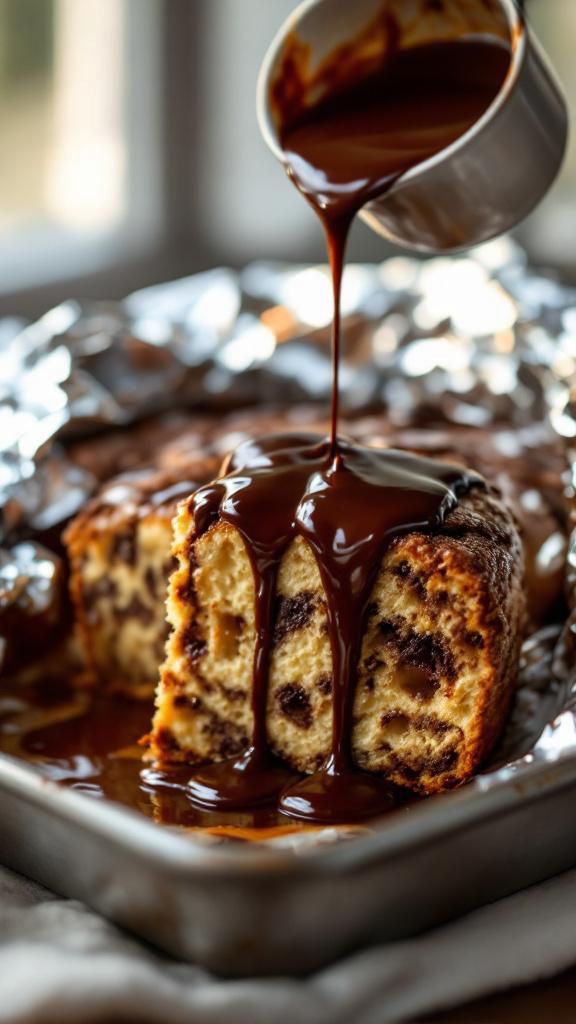
Bake (Uncovered) & Set: Carefully remove the foil. Bake for a further 20-30 minutes, or until the custard is just set (it should have a slight wobble in the centre when gently shaken) and the top is golden brown and puffed.
Rest & Serve: Remove from the oven. Let the pudding rest for 10-15 minutes. It will sink slightly – this is normal! Serve warm.
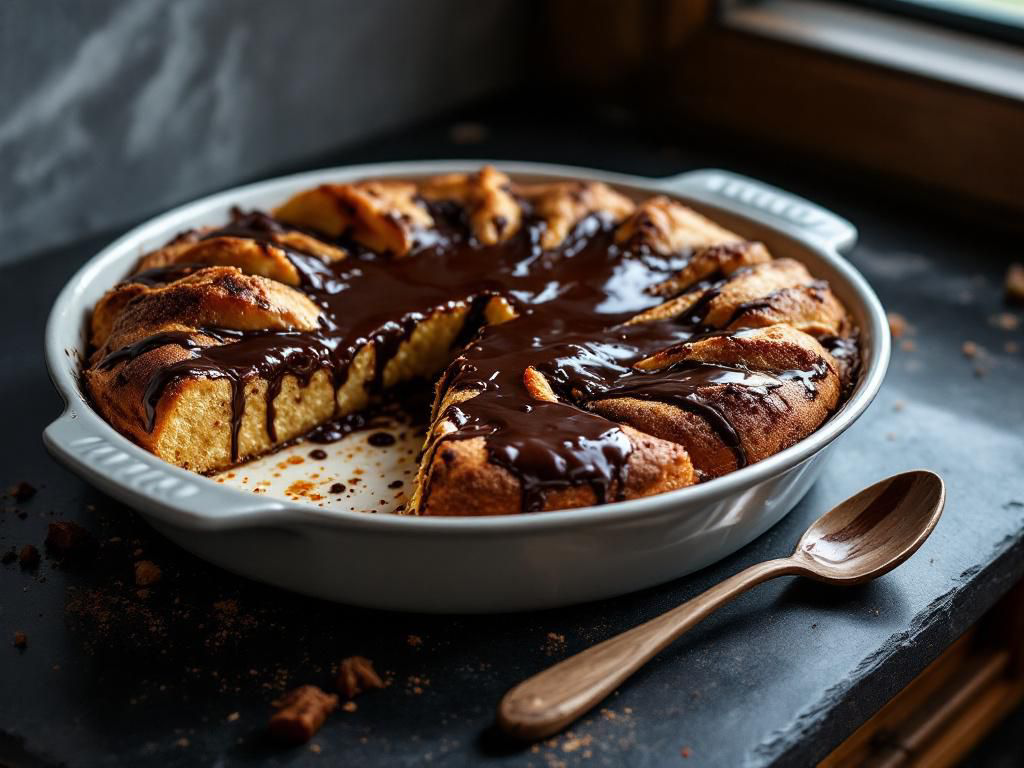
V. Flavor Profile & Nutritional Information
Flavor: Deep, rich dark chocolate melds with the sweet, buttery notes of the brioche and the luxurious vanilla custard. It’s intensely chocolatey without being cloying, balanced by the richness of the eggs and cream. The texture is divine: crisp, caramelised top layer giving way to soft, almost bread-sauce-like middle and pockets of molten chocolate.
Nutrition (Per Serving – Approx 1/6th): Estimated using online nutritional calculator with common ingredient brands.
- Calories: ~680 kcal
- Fat: 48g (Saturated Fat: 28g)
- Carbohydrates: 52g (Sugars: 30g)
- Protein: 12g
- Fiber: 3g
- Sodium: 220mg
- (Note: Values can vary based on specific brands of bread/chocolate/dairy used. This is a rich, indulgent dessert best enjoyed in moderation.)
VI. Tips for a Perfect Pudding (Troubleshooting & Enhancements)
- Soggy Bottom? Ensure bread is stale. Don’t skip the resting time (30 min min!). Bake covered initially.
- Eggy Taste? Avoid over-whisking the custard base (creates bubbles). Use fresh eggs. Ensure dairy is warm, not hot, when adding to eggs.
- Not Setting? Oven temp might be too low. Check calibration. Bake uncovered until just set with a slight wobble. It firms up while resting.
- Bread Too Dry? Press down any exposed bread during resting. Ensure custard fully covers.
- Enhance Flavor: Add 1 tbsp brandy or orange liqueur to the warm cream. Sprinkle flaky sea salt over the chocolate layers. Use a mix of milk and dark chocolate.
- Enhance Texture: Sprinkle demerara sugar over the top before the final uncovered bake for extra crunch.
- Variations: Add a layer of sliced bananas or a swirl of raspberry jam beneath the chocolate. Use panettone instead of brioche at Christmas. Swap 50g chocolate for chopped toasted nuts (hazelnuts, pecans).
VII. Vegan Adaptation
Enjoy this classic cruelty-free! Key changes ensure richness without dairy/eggs.
- Ingredients:
- 8 slices slightly stale vegan brioche or thick white bread
- 50g vegan butter (plus extra for greasing)
- 150g high-quality vegan dark chocolate (check label)
- 600ml full-fat canned coconut milk (shake well!) OR unsweetened soy cream
- 75g golden caster sugar
- 1 tsp vanilla bean paste
- 75g cornflour (cornstarch)
- 3 tbsp aquafaba (chickpea brine) OR 1 flax egg (1 tbsp ground flax + 3 tbsp water, mix & sit 5 min)
- Pinch salt
- Instructions:
- Grease dish, butter & layer bread with chocolate as per main recipe.
- Whisk cornflarch with 4-5 tbsp cold coconut/soy milk to form a smooth paste.
- Heat remaining coconut/soy milk, sugar, vanilla, and salt in a saucepan until steaming.
- Whisk cornflour paste into the hot milk. Cook over med-low heat, whisking constantly, until very thick and bubbling (like thick custard). Remove from heat.
- Whisk aquafaba or flax egg until slightly frothy. Gradually whisk into the hot thickened milk mixture until smooth.
- Pour custard over bread/chocolate. Press down bread. Rest 30 mins.
- Bake covered @ 160°C (140°C Fan)/325°F for 30 mins. Uncover, bake 20-30 mins more until top is golden and custard set at edges (centre will be softer).
- Rest 15 mins before serving. Texture will be slightly softer than egg version but deliciously rich.
VIII. Recipe Variations & Serving Suggestions
- Variations: White Chocolate & Berry (swap dark for white choc, add fresh raspberries); Salted Caramel Chocolate (drizzle layer of vegan caramel sauce); Spiced Chocolate (add 1 tsp cinnamon, 1/4 tsp nutmeg to custard).
- Serving: Best warm. Classic accompaniment is pouring cream or custard. For contrast, serve with fresh raspberries or a scoop of vanilla (or berry) ice cream. A dusting of icing sugar adds elegance.
IX. Storage & Reheating Instructions
- Storage: Cool completely. Cover tightly and refrigerate for up to 2 days.
- Reheating: Best reheated in portions. Microwave individual servings on medium power for 60-90 seconds until warmed through. For larger portions, cover with foil and reheat in a preheated oven at 160°C (140°C Fan)/325°F for 15-20 mins. The pudding can be frozen (cool, wrap tightly in clingfilm & foil) for up to 1 month. Thaw overnight in fridge before reheating. Texture may be slightly softer after freezing.
X. Frequently Asked Questions (FAQ)
- Can I use fresh bread? Avoid it if possible. Stale bread absorbs custard better without becoming mushy. If fresh, toast slices lightly first.
- My custard split when I poured the hot milk in! The milk was likely too hot, scrambling the eggs. Ensure it’s just steaming, not boiling, and whisk vigorously while adding slowly. Straining helps salvage it.
- Can I make it ahead? Assemble completely (steps 1-6) up to 24 hours in advance. Cover and refrigerate. Add 5-10 mins to the covered baking time if going straight from fridge to oven.
- What chocolate is best? A good 70% dark chocolate gives the best balance. Avoid baking chocolate meant for melting – it lacks flavour. Mary Berry often recommends Green & Black’s or Callebaut.
- Is brioche essential? It adds wonderful richness, but a good quality, slightly stale white bread (like a thick-sliced farmhouse loaf) works perfectly well.
- Can I use a slow cooker? Yes! Layer as directed in a greased slow cooker pot. Pour custard over. Cook on LOW for 3-4 hours until set. No need to cover with foil inside.
XI. Conclusion & Call to Action
Mary Berry’s Chocolate Bread and Butter Pudding is more than dessert; it’s edible comfort, a testament to her genius for transforming simplicity into something spectacular. With its rich chocolate, pillowy custard, and golden top, it’s guaranteed to delight. Whether you’re using up leftover brioche or craving a show-stopping treat, this recipe delivers. It embodies Mary’s core principles: quality ingredients, clear instructions, and utterly delicious results.
Ready to bake some comfort? Give this recipe a try – it’s easier than you think! Share your masterpiece (and any clever twists) with us on social media using #MaryBerryChocolatePudding. We’d love to see your results! Craving more Berry brilliance?
XII. Additional Resources
- Mary Berry’s Official Website & Cookbooks: Dive deeper into Mary’s world. Find her latest books, tips, and more recipes: www.maryberry.co.uk/cookbooks
- Explore More Classics: Discover the history of traditional British puddings and other recipes: love and lemons
- British Food History: Delve into the fascinating origins of dishes like Bread and Butter Pudding: British Food: A History (A well-regarded blog by historian Dr. Annie Gray).



